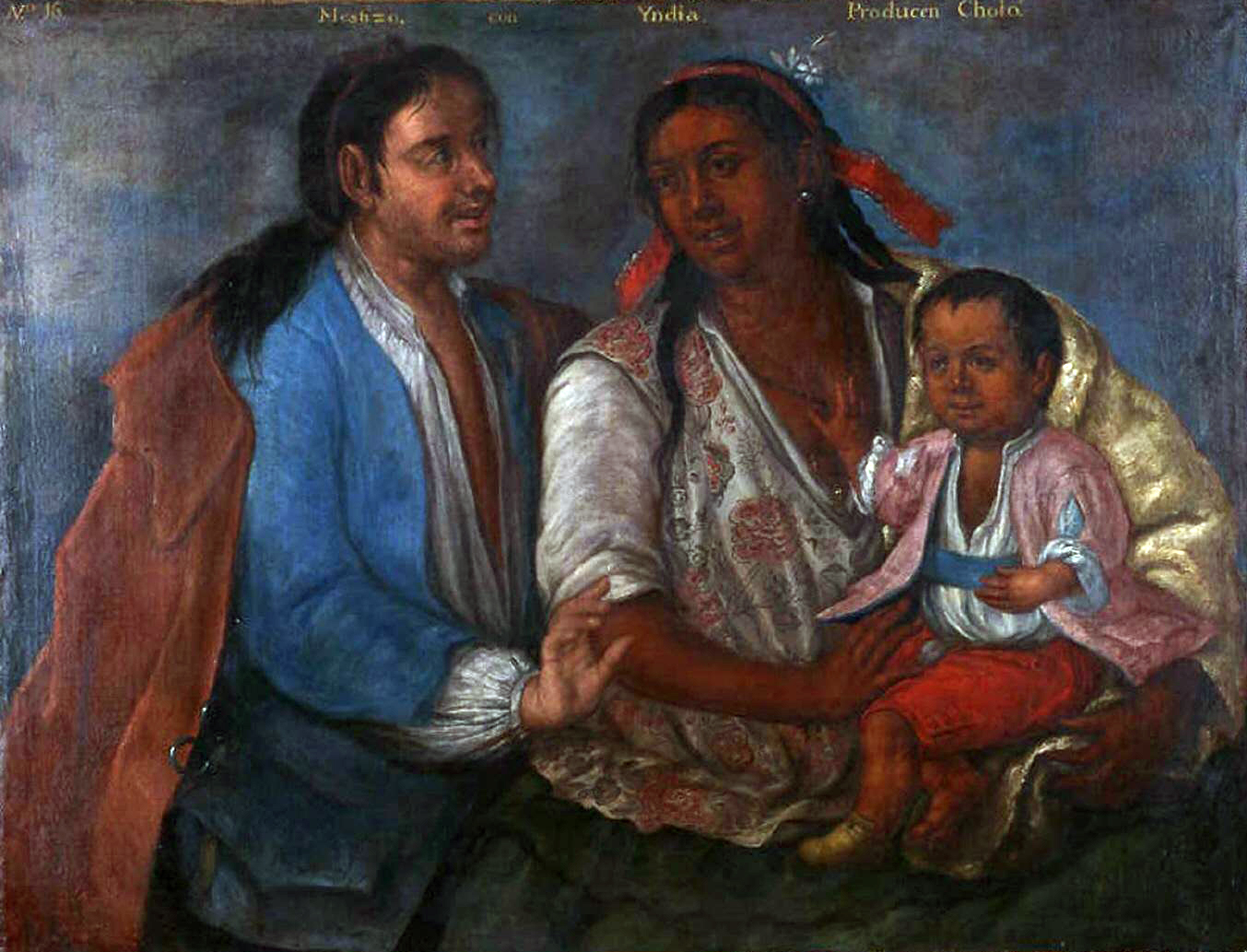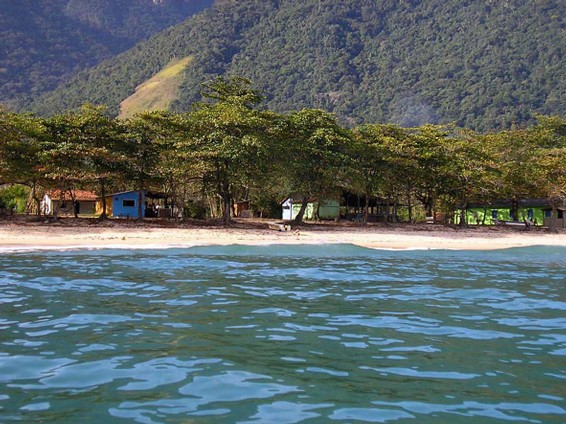|
Cholos Pescadores
''Cholos pescadores'' ('Cholo fishermen', ''cholo pescador'') are a social group that live in Ecuador's Guayas and Manabí provinces. They are descended from Hispanicized indigenous coastal peoples, which were wiped out as political entities during the colonial era, but maintained a separate identity. Today, cholos pescadores continue to engage in fishing as their primary economic activity. File:Cholo pescador basketry.jpg, Cholo pescador basketry File:Cholo pescador bags.jpg, Cholo pescador bags See also * Manteño civilization * Montubio * Caiçaras *Cholo *Ribeirinhos The ribeirinhos are a traditional population in South America, who live near rivers. Their main activities are fishing and Agriculture, farming on a small scale, for their own use. They usually live in Stilt house, pile dwelling and travel by ... Further reading * Ethnic groups in Ecuador {{SouthAm-ethno-group-stub ... [...More Info...] [...Related Items...] OR: [Wikipedia] [Google] [Baidu] |
Cholo
''Cholo'' () is a loosely defined Spanish term that has had various meanings. Its origin is a somewhat derogatory term for people of mixed-blood heritage in the Spanish Empire in Latin America and its successor states as part of '' castas'', the informal ranking of society by heritage. ''Cholo'' no longer necessarily refers only to ethnic heritage, and is not always meant negatively. ''Cholo'' can signify anything from its original sense as a person with one Amerindian parent and one '' Mestizo'' parent, "gangster" in Mexico, an insult in some South American countries (similar to chulo in Spain), or a "person who dresses in the manner of a certain subculture" in the United States as part of the cholo subculture. Historical usage In his work ''Vocabulario en Lengua Castellana y Mexicana'' (1571), Fray Alonso de Molina reports that the word "cholo" or "xolo" derives from Nahuatl and means "paje, moço, criado o esclavo" ("page, waiter, servant o slave"). The term's use ... [...More Info...] [...Related Items...] OR: [Wikipedia] [Google] [Baidu] |
Ecuador
Ecuador ( ; ; Quechua: ''Ikwayur''; Shuar: ''Ecuador'' or ''Ekuatur''), officially the Republic of Ecuador ( es, República del Ecuador, which literally translates as "Republic of the Equator"; Quechua: ''Ikwadur Ripuwlika''; Shuar: ''Ekuatur Nunka''), is a country in northwestern South America, bordered by Colombia on the north, Peru on the east and south, and the Pacific Ocean on the west. Ecuador also includes the Galápagos Islands in the Pacific, about west of the mainland. The country's capital and largest city is Quito. The territories of modern-day Ecuador were once home to a variety of Indigenous groups that were gradually incorporated into the Inca Empire during the 15th century. The territory was colonized by Spain during the 16th century, achieving independence in 1820 as part of Gran Colombia, from which it emerged as its own sovereign state in 1830. The legacy of both empires is reflected in Ecuador's ethnically diverse population, with most of its mill ... [...More Info...] [...Related Items...] OR: [Wikipedia] [Google] [Baidu] |
Guayas Province
Guayas () is a coastal Provinces of Ecuador, province in Ecuador. It is bordered to the west by Manabí Province, Manabí, Santa Elena Province, Ecuador, Santa Elena, and the Pacific Ocean (as the Gulf of Guayaquil); to the east by Los Ríos Province, Los Ríos, Bolívar Province, Ecuador, Bolívar, Chimborazo Province, Chimborazo, Cañar Province, Cañar, and Azuay Province, Azuay; to the north by Los Ríos Province, Los Ríos and Bolívar Province, Ecuador, Bolívar; and to the south by El Oro Province, El Oro and the Pacific Ocean. With a population of over 3 million people, it is the most populous province in Ecuador. In terms of area it is the List of Ecuadorian provinces by area, seventh largest province in the country. The main port of Ecuador, Guayaquil, is located within the province. Geography Guayas' natural terrain is very diverse. The province has no elevations, except for the Coastal Range (Ecuador), Coastal Range, which starts in Guayaquil and goes to Manabí Pro ... [...More Info...] [...Related Items...] OR: [Wikipedia] [Google] [Baidu] |
Manabí Province
Manabí () is a province in Ecuador. Its capital is Portoviejo. The province is named after the Manabí people. Demographics Ethnic groups as of the Ecuadorian census of 2010: *Mestizo 66.7% * Montubio 19.2% * Afro-Ecuadorian 6.0% *White 7.7% *Indigenous 0.2% *Other 0.3% Economy Manabí's economy is based heavily on natural resources and organic products; these include cacao, bananas, noble woods, cotton, and seafood. Its industrial sector is based on tuna, great quality tobacco, and agua ardiente (Spanish brandy) beverage production. Local products include crafting of Montecristi hats (i.e. Panama hats), and furniture (rattan). Cantons The province is divided into 22 cantons. The following table lists each with its population at the 2001 census, its area in square kilometers (km²), and the name of the canton seat or capital. stat ... [...More Info...] [...Related Items...] OR: [Wikipedia] [Google] [Baidu] |
Hispanicized
Hispanicization ( es, hispanización) refers to the process by which a place or person becomes influenced by Hispanic culture or a process of cultural and/or linguistic change in which something non-Hispanic becomes Hispanic. Hispanicization is illustrated by spoken Spanish, production and consumption of Hispanic food, Spanish language music, and participation in Hispanic festivals and holidays. In the former Spanish colonies, the term is also used in the narrow linguistic sense of the Spanish language replacing indigenous languages. Spain Within Spain, the term "Hispanization" can refer to the cultural and linguistic absorption of the ethnically Berber Guanches, the indigenous people of the Canary Islands in the century following their subjugation in the 15th century. It is relatively rarely used as a synonym for Castilianization (castellanización) i.e. the historical process whereby speakers of minority Spanish languages such as Catalan, Basque, Galician, Astur-Leonese or Ara ... [...More Info...] [...Related Items...] OR: [Wikipedia] [Google] [Baidu] |
Montubio
Montubio is the term used to describe the mestizo people of the countryside of coastal Ecuador. The Montubio make up 7.4% of the country's population and were recognized as a distinct ethnicity by the government in the spring of 2001 after protests that included protracted hunger strikes. The Council for the Development of the Montubio People of the Ecuadorian Coast and Subtropical Zones of the Littoral Region (CODEPMOC) was granted official status and government funding. The Montubio are known for their ranching activities, rodeos, machetes and distinctive attire (including Panama hats, originally made in Montecristi). In Ecuadorian literature, the Montubios have been written as "a local stock coastal character" by novelist Alfredo Pareja Diezcanseco and the "Guayaquil Group": Demetrio Aguilera Malta, Enrique Gil Gilberto, and Joaquín Gallegos Lara. They have also been recorded by Jenny Estrada in ''El Montubio – un forjador de identidad'' (1996), Teodoro Crespo in ''El M ... [...More Info...] [...Related Items...] OR: [Wikipedia] [Google] [Baidu] |
Caiçaras
Caiçaras () are the traditional inhabitants of the coastal regions of the southeastern and southern Brazil. They form a distinct group of people, descended from Africans, indigenous people, and Europeans. Their traditional way of life based on subsistence agriculture, hunting and fishing is threatened by real estate speculation, restrictive laws and declining fish stocks. Origins The name ''caiçara'' comes from the Tupi language ''ka'aysá'' (or ''ka'aysara''), a rustic fence made of tree branches. The fences would surround a village, or would be used for trapping fish. Over time it came to be used for the huts built on the beaches, and then for the inhabitants. The people are of mixed African, indigenous, and European origins. Their origins and customs are similar to the caipiras who live further inland. In literature the caiçaras are represented as traditional, primitive, isolated and self-sufficient fishing people. This is an inaccurate stereotype, since it was only with ... [...More Info...] [...Related Items...] OR: [Wikipedia] [Google] [Baidu] |
Ribeirinhos
The ribeirinhos are a traditional population in South America, who live near rivers. Their main activities are fishing and Agriculture, farming on a small scale, for their own use. They usually live in Stilt house, pile dwelling and travel by motor boats called Voadeira, voadeiras. According to the Joshua Project, there are approximately 7,105,000 ribeirinho people in Brazil. The Brazilian government has formally recognized their existence since 2007. See also *Cholos pescadores *Montubio *Caiçaras *Indigenous peoples in Brazil References Ethnic groups in Brazil Rivers {{Brazil-culture-stub ... [...More Info...] [...Related Items...] OR: [Wikipedia] [Google] [Baidu] |



